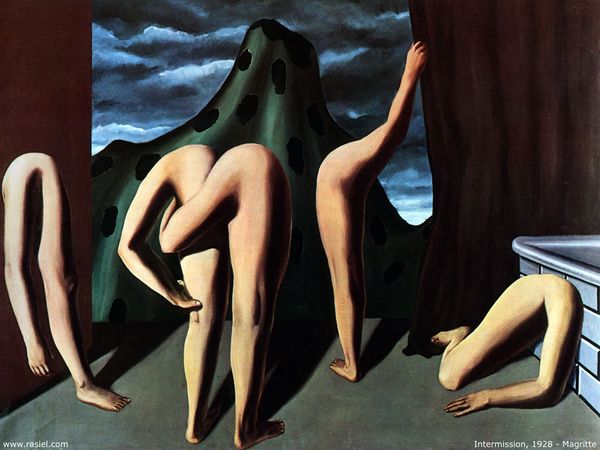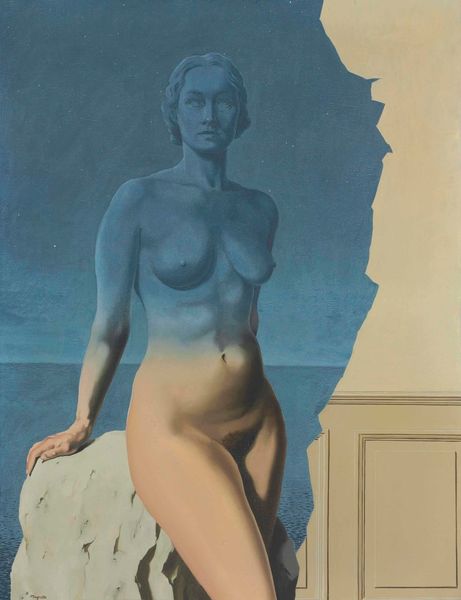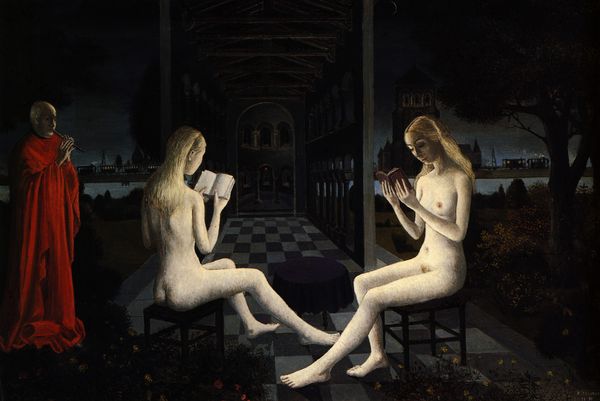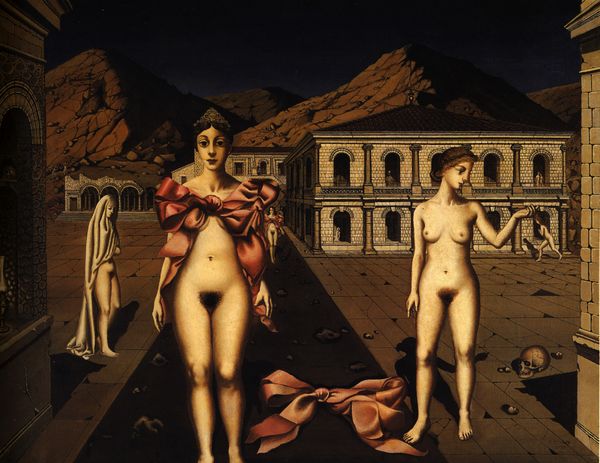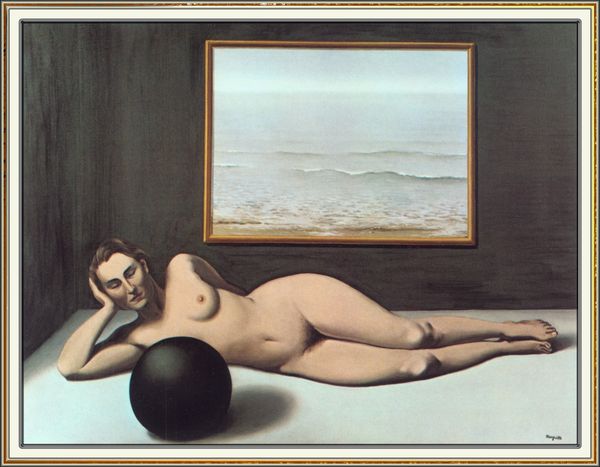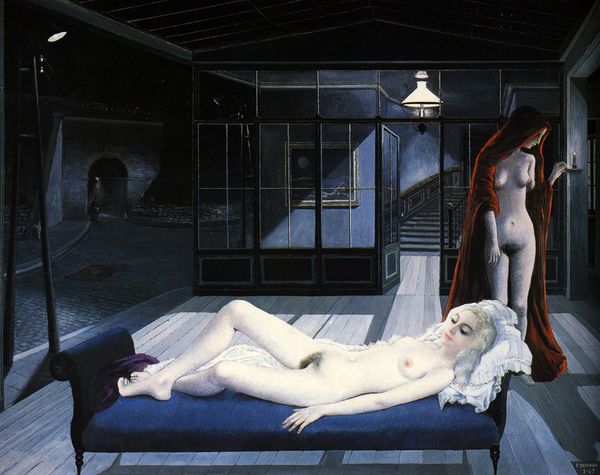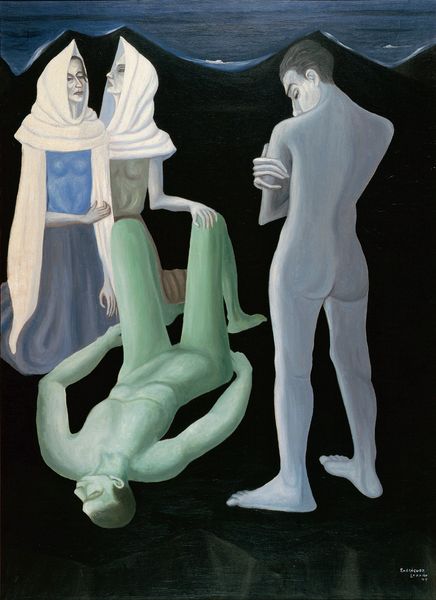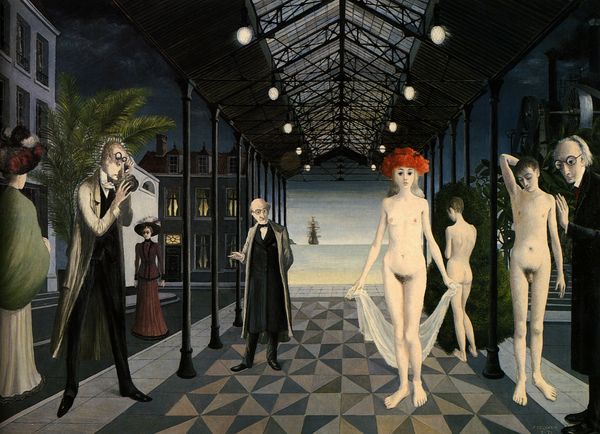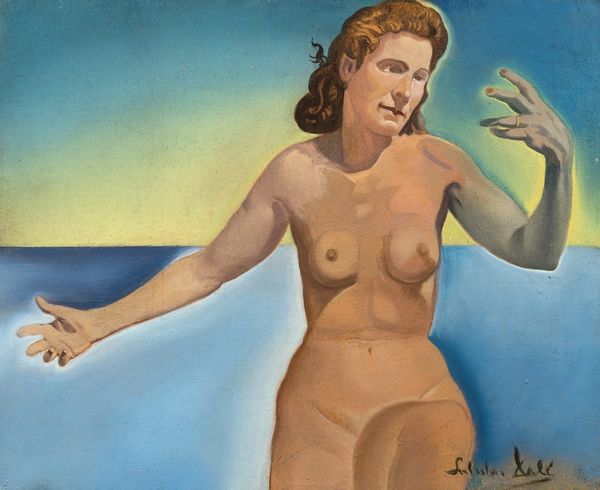
painting, oil-paint
#
statue
#
painting
#
oil-paint
#
landscape
#
classical-realism
#
female-nude
#
column
#
history-painting
#
nude
#
surrealism
Dimensions: 150 x 260 cm
Copyright: Paul Delvaux,Fair Use
Curator: Paul Delvaux painted “Dialogue” in 1974. What strikes you first about it? Editor: The geometry! The stark, receding planes under these pale nudes and those looming classical columns—all painted in oil. The slick surface contradicts the historical allusions. It’s unsettling, almost manufactured. Curator: The women, seemingly frozen within the colonnade, resonate deeply. These aren't portraits but echoes of the classical nude, vessels carrying Delvaux’s obsessions. Remember the recurring figure of the reclining Venus throughout history—here, they’re staged like silent players in an eternal drama. Editor: The women feel strangely disconnected. It makes me wonder about Delvaux’s methods. Were these painted from life, or were they appropriations from mass media—like the mannequins he also featured? The precise execution is what dominates; these surfaces feel scrubbed clean of process or passion. Curator: Absolutely, these dreamscapes are underpinned by cultural memories, yet stripped of specific narrative. The repeated columns act like visual cues—fragments of remembered architecture representing permanence, stability, order itself—yet destabilized in this impossible landscape. Do they trigger memories of grand historical narratives or, perhaps, evoke a sense of lost origins? Editor: Lost origins indeed. It all looks manufactured, even though it references something 'real'– those Ionic columns or posed models in a life-drawing class. The illusion feels both precise and disturbingly flat, lacking evidence of layering or hand-work that speaks of skill as embodied process, instead of skillful pretense. The painting becomes this cold display of something real filtered through consumerist values. Curator: And that friction is where the magic lies, isn't it? Delvaux doesn't simply recreate; he reframes, creating new symbols from the old. His figures aren't goddesses but representations—vehicles to consider archetypal roles women are compelled to perform in modern society. Editor: Maybe it reveals more about anxieties around production than around archetypes themselves. Looking closely—or not so closely, really—I find his obsession with geometry far more poignant than the figures’ apparent silence.
Comments
No comments
Be the first to comment and join the conversation on the ultimate creative platform.


